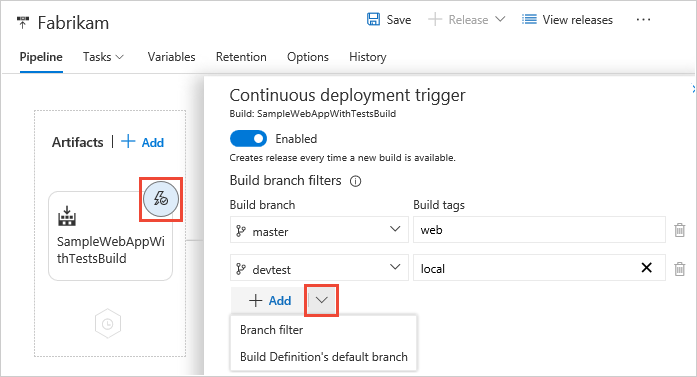Release, branch, and environment triggers
You can configure when releases should be created, and when those releases should be deployed to environments. The former is configured through release triggers, and the latter through environment triggers - both in a release definition.
Release triggers
If you specify certain types of artifacts in a release definition, you can enable continuous deployment. This instructs Release Management to create new releases automatically when it detects new artifacts are available. At present this option is available only for Team Foundation Build artifacts and Git-based sources such as Team Foundation Git, GitHub, and other Git repositories.
If you have linked multiple Team Foundation Build artifacts to a release definition, you can configure continuous deployment for each of them. In other words, you can choose to have a release created automatically when a new build of any of those artifacts is produced.
Environment triggers
You can choose to have the deployment to each environment triggered automatically when a release is created by a continuous deployment trigger, based on:
A predefined schedule

When you select this option, you can select the days of the week and the time of day that Release Management will automatically create a new release. You can configure multiple schedules as required. Note that, with scheduled triggers, a new release is created even if a newer version of artifact is not available since the last release.
Filters based on the artifacts

You can add one or more filters for each artifact linked to the release definition, and specify if you want to include or exclude particular branches of the code. Deployment will be triggered to this environment only if all the artifact conditions are successfully met.
